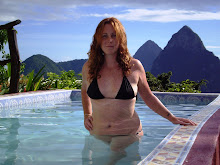In this part, a short overveiw of other popular land-based activities in the area will be given. These posts are to act as a small indiciator to what huge potential there is on the Costa Blanca, and indeed, the Valencian region as a whole.
Adventure holidays take up a big chunk of the travel market, and the numbers are growing. Pursual of an active life brings many rewards, not only does it increase fitness, but also an appreciation and awareness of the environment.
The choice of adventure experiences in Spain as a whole is very good; so regardless of your adhrenline threshold, it would be easy to find a provider that can stimulate your senses, in a safe and controlled environment. Or, for those who like to go it alone, there are plenty of resources out there to consult.
Quad Biking:
Available throughout the area by a multitude of providers; though not all legal and insured - so be careful who you pick as you may not be covered in the event of an accident! A great activity for all the family, and a brilliant way to experience what the Spanish countryside has to offer. For the brave, controlled, steep descents get the heart pumping. For those wanting tamer experiences, simply letting the throttle out brings tremendous joy!

Horse Riding:
All centres are bound by legislation, some can only offer gentle, led treks, while others can provide more choices that include full-blown riding, classes and beach excursions. A more environmentally friendly way to discover the area, horse riding is fun and helps improve fitness if done on a regular basis.

Archery & Air Rifle Shooting:
Let out the hunter within! Learning these skills can bring tremendous satisfaction. Under the supervision of a good instructor, newby's should get the basics within a couple of hours. There are many companies offering these activities all over the country and they are popular choices for people of all fitness levels and backgrounds. Archery and air rifle shooting are especially popular with families and stag parties, with informal competitions proving to be great fun for all involved.

(Archery)

(Air Rifle Shooting)
Clay Pigeon Shooting:
The shotguns used to shoot clay are heavy and loud; so if you're going for the first time, don't forget to buy earpulgs! There are not many registered schools and clubs within the Costa Blanca, the most professional and best known to date being Alicante Shooting Breaks (http://www.alicanteshootingbreaks.com/), run by David Berenguer.
The club is set in a rustic valley on the outskirts of the Sierra de Maigmo, just inland from Alicante. Shooters from the UK should be prepared for a more basic, yet challenging experience.
If interested in trying this exciting activity, one should be aware of the legislation regarding the use and handling of shotguns and sign up with a registered and insured school.

(Clay Pigeon Shooting)
There are dozens of other options available for those keen on an active and outdoor life. Mountain biking and cycling are big business here and groups of cyclists can be seen making their way through villages, towns and green routes year round.
Paintballing:
Another popular choice for stag parties, there is a reputable and long running activity provider in Benidorm offering this and a whole host of other adventures for groups and families on holiday: http://www.marcopolo-exp.es/en_html/

(Paintballing)
Segways:
They may be new on the scene but they are proving popular choices for tourists wanting city tours. Learning how to use one is half the fun, keep an eye out for people wobbling whilst trying to get their balance. The other half of the fun is taking an elevated and smooth ride around on a futuristic and modern piece of technology.

(Segway)
Pole Dance Fitness:
Another new contender; yet to truly catch on in Spain but a big hit in America, the UK and Australia, the associations governing this activity are bidding for it to become an Olymic event! Wrongly percieved as being related to the sex industry (times change!), this activity is not to be underestimated!
Participants are extremely fit and supple with high stamina levels. Ladies taking this up as a regular leisure activity report an increase in confidence and happyness, as well as an improved physique!
Private parties for Hens are very popular, the only provider on the Costa Blanca being Maria Fallas from The Pole Professionals: http://www.pole-professionals.com/index.html

For those who are yet to take this sport seriously, check out:
http://www.youtube.com/watch?v=SF6t0shspBg
Yoga:
For those who prefer more calm in their lives, yoga is still going strong after coming out in the 60's. There are retreats scattered throughout Spain; on hillsides, over-looking the Mediteranean, and in cities and towns throughout. A divine activity with dozens of physical, mental and spiritual benefits, yoga is the ultimate activity for those seeking inner peace.
RESOURCES
For further information, check out some of the national governing bodies for individual activities:
Horse Riding; http://www.rfhe.com/
Hunting / Shooting; http://www.fecaza.com/
Pole Dance Fitness (International Federation): http://www.ipdfa.com/























